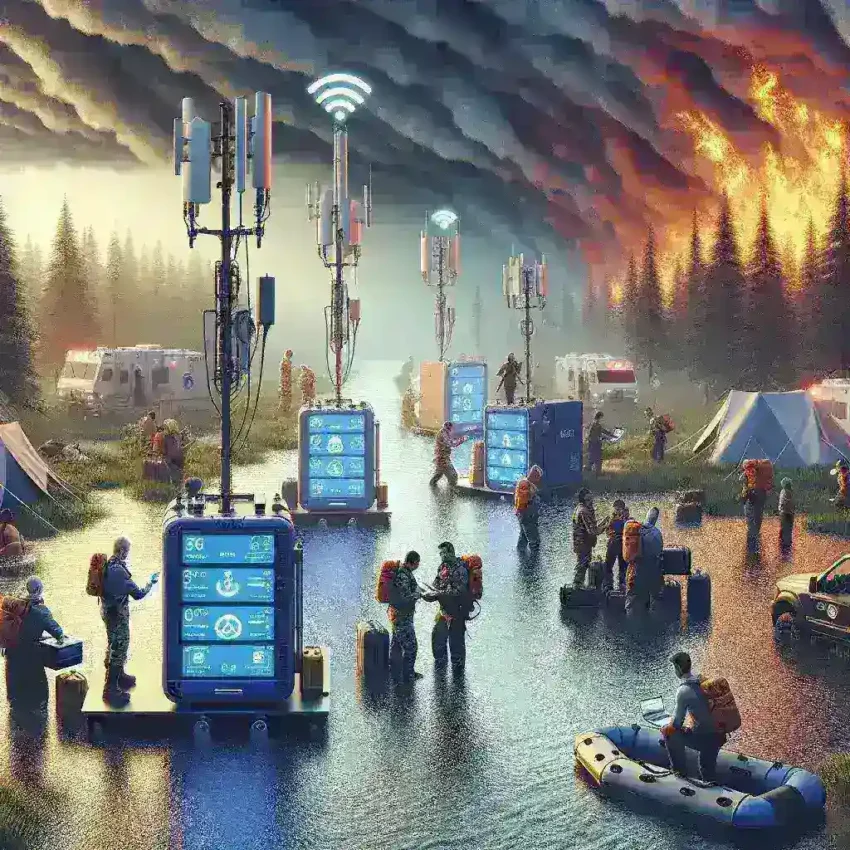Introduction to Verizon’s 5G Emergency Response Kits
As the frequency and severity of natural disasters increase globally, the need for effective communication systems becomes critical. In response to this challenge, Verizon has launched its innovative 5G Emergency Response Kits, designed to provide essential connectivity in areas affected by disasters. These kits aim to ensure that first responders can communicate seamlessly, and communities can stay informed during crises.
Understanding the Need for 5G in Disaster Response
The advent of 5G technology marks a significant advancement in communication capabilities. When disaster strikes, traditional communication infrastructures can become overwhelmed or damaged. With 5G’s high-speed connectivity, low latency, and increased bandwidth, responders can maintain communication lines that are vital for coordinating efforts and delivering aid.
The Role of 5G in Natural Disasters
Natural disasters, including hurricanes, earthquakes, floods, and wildfires, can disrupt communication networks. The deployment of 5G technology in emergency response not only provides faster data transmission but also enhances the ability to share critical information in real-time. This capability is essential for:
- Real-time Data Sharing: Sending and receiving critical updates about the situation on the ground.
- Coordination of Resources: Ensuring that help can be directed where it’s needed most.
- Public Safety Communications: Keeping citizens informed of warnings and safety measures.
Features of Verizon’s 5G Emergency Response Kits
Verizon’s 5G Emergency Response Kits are equipped with state-of-the-art technology to tackle various challenges in disaster zones. Each kit includes:
- Portable 5G Routers: These routers create a local high-speed network, allowing multiple devices to connect and communicate.
- Satellite Phones: In case cellular networks are down, satellite phones ensure that communication remains possible.
- Charging Stations: Solar-powered chargers are included to keep devices operational without relying on local power sources.
- Emergency Power Supply: A backup power system to keep essential equipment running.
Implementation Strategy
The deployment of these kits will be strategically managed in collaboration with local authorities and emergency services, ensuring they are readily available when needed most. Verizon’s partnerships with various organizations enhance the efficacy of these kits by integrating local knowledge and resources.
Historical Context: The Evolution of Emergency Response
Historically, communication during disasters has relied on landlines and traditional radio systems. The limitations of these technologies were evident in major disasters like Hurricane Katrina and the Haiti earthquake, where communication failures hindered rescue and recovery efforts. The introduction of mobile technology has transformed this landscape, and now, with 5G, we are witnessing another leap forward.
Future Predictions: The Impact of 5G on Disaster Management
Looking ahead, the integration of 5G technology in emergency response is expected to evolve further. As more cities and regions adopt 5G infrastructure, the potential for advanced applications, such as:
- Drone Technology: Drones equipped with 5G can survey areas quickly, delivering vital information to responders efficiently.
- Smart Sensors: These can provide real-time data on environmental conditions, assisting in predictive analytics for disaster management.
- Augmented Reality (AR): AR tools can improve training for responders, allowing them to simulate scenarios for better preparedness.
Advantages of Verizon’s 5G Emergency Response Kits
There are numerous advantages to using Verizon’s 5G Emergency Response Kits:
- Enhanced Communication: High-speed and reliable communication can save lives by enabling quick decision-making.
- Increased Efficiency: First responders can operate more effectively with access to real-time data and updates.
- Broader Reach: These kits can be deployed to remote areas where communication infrastructure is limited or damaged.
Challenges and Considerations
While the benefits of Verizon’s 5G Emergency Response Kits are clear, there are several challenges to consider:
- Infrastructure Dependency: The effectiveness of 5G relies on existing networks; in some areas, infrastructure may still need to be developed.
- Cost of Deployment: While Verizon aims to provide these kits to communities in need, the cost of deployment can be a barrier.
- Training for Users: Ensuring that first responders and local officials are trained to utilize these technologies is crucial for their success.
Real-World Examples of 5G in Action
Several instances highlight the power of 5G in emergency situations. For example, during the aftermath of natural disasters, cities that have integrated 5G technology have reported significantly improved response times and coordination among agencies. In some cases, real-time video feeds from drones and responders on the ground have allowed for more efficient resource allocation and quicker aid delivery.
Expert Insights
Experts in the field of emergency management have lauded Verizon’s initiative as a game changer. According to Dr. Emily Rodriguez, a disaster response specialist, “The implementation of advanced communication technology like 5G is essential for modern emergency response. With these kits, we can facilitate better coordination and save lives during critical times.”
Cultural Relevance of Emergency Response Technologies
The adoption of advanced communications in disaster response is not only a technological advancement but also a cultural necessity. In societies increasingly reliant on technology for information, adapting to new methods of communication can bridge the gap between chaos and order during disasters. Communities that embrace these technologies can foster resilience, ensuring that citizens are better prepared and informed.
Conclusion: A Step Towards Resilience
Verizon’s rollout of 5G Emergency Response Kits represents a pivotal moment in the evolution of disaster management. By equipping first responders with cutting-edge communication tools, Verizon is not only enhancing the ability to respond to crises but also empowering communities to become more resilient in the face of adversity. As we move forward, the importance of integrating technology in disaster response will only continue to grow, and initiatives like these set a precedent for the future of emergency management.

